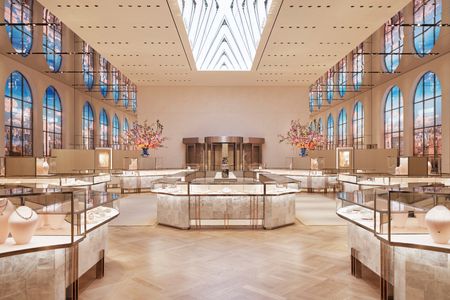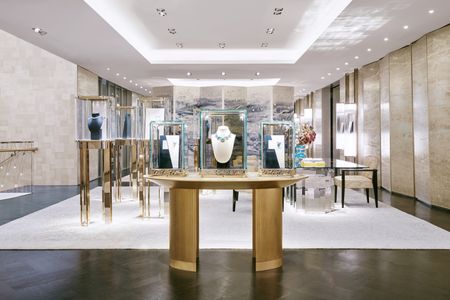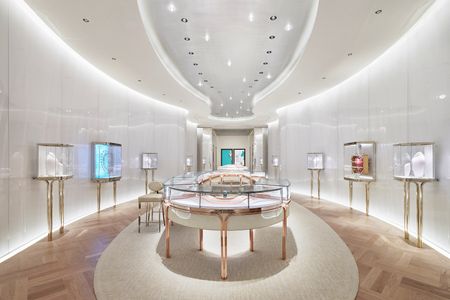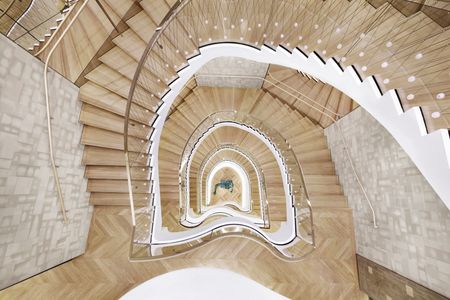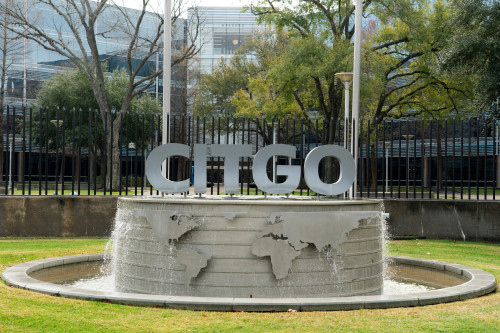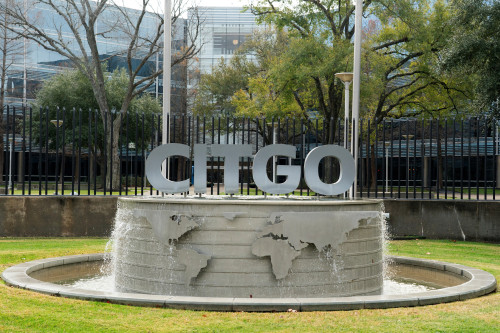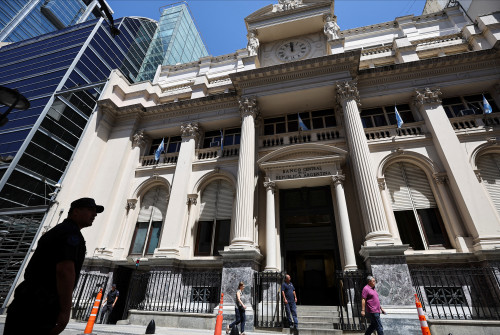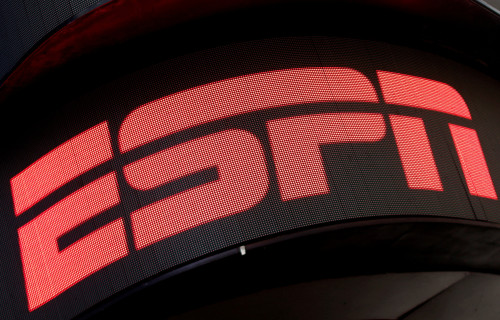By Katherine Masters and Mimosa Spencer
NEW YORK (Reuters) -The splashy reopening of Tiffany & Co’s flagship store on the corner of Fifth Avenue and East 57th Street is a renovation representing the billions of capital investment in one of New York City’s most iconic shopping districts.
Real estate experts say the flow of cash is part of a bid to re-imagine an area of Midtown that extends from 49th Street to the Plaza Hotel and includes Fifth and Madison Avenues. The district has long been anchored by luxury stores including Tiffany, Saks Fifth Avenue and Bergdorf Goodman.
With the return of tourism to New York after pandemic-related declines, luxury retailers are again betting on refreshed flagships to drive consumer interest and traffic.
Saks is undergoing a $250 to $270 million renovation of its Fifth Avenue flagship, including a remodeled seventh-floor men’s department. Hermès opened a new four-story flagship on nearby Madison Avenue in 2022.
LVMH, the world’s biggest luxury group and Europe’s most valuable company, bought Tiffany in 2021 for $16 billion after an acrimonious legal battle. The new flagship is scheduled to open to shoppers on Friday, a key debut for a store that accounted for 10% of Tiffany’s global sales before it closed for renovation in 2019.
The company has pushed Tiffany upmarket, beyond it being a byword for engagement rings. According to HSBC analysts, the jeweler grew sales to 5.1 billion euros in 2022 from 3 billion euros in 2020 and is forecast to reach 7.4 billion in 2025.
It involved a redesign of the entire 10-story building led by architect Peter Marino, known for his work on some of the biggest flagship stores in the luxury industry.
LVMH officials have not made the cost of the revamp public. The group has invested heavily in flagships for other labels including Bulgari, across the street from Tiffany, as well as Louis Vuitton’s Place Vendome outpost in Paris.
The store’s reopening is the latest in a series of high-profile investments in the neighborhood, said Richard Hodos, vice chairman of real estate firm JLL’s New York retail team. Rolex is in the midst of a renovation of its Fifth Avenue headquarters, which will feature a ground-floor retail store and 25-story glass office tower.
The development firm SHVO also invested at least $135 million to convert 685 Fifth Avenue into luxury residences managed by the Mandarin Oriental Hotel Group, according to industry estimates.
Brookfield Properties is spending $400 million to renovate a 39-story office building at 660 Fifth Avenue.
“Fifth Avenue is in the middle of this renaissance,” Hodos said. “This is after a lot of retailers struggled during the pandemic.”
Many companies began leaving the area even before COVID-related closures cut into sales. Beginning in 2017, brands including Ralph Lauren, Calvin Klein and Gap said they would shut their flagship stores on Fifth Avenue.
Gene Spiegelman, vice chairman of RIPCO Real Estate, said departures were driven by a rise in e-commerce and high rents in the area, which lowered the profitability of large flagships.
“Brands are not going to pay a premium for brick-and-mortar locations that have been diluted by online sales,” Spiegelman said.
Renewed interest in the area has stemmed from a variety of factors. Both Spiegelman and Hodos said that retail rents have dropped to about $2,000 per square foot for ground-floor spaces.
While high, it’s a decline from 2015, when Spiegelman said the luxury retailer Bulgari paid $5,000 per square foot for a lease extension on Fifth Avenue.
Tourism is also recovering. There were 47.3 million domestic visitors to New York in 2022 and 9.4 million international travelers, versus 53.1 million domestic tourists and 13.5 million international visitors in 2019, according to the New York City Tourism and Conventions bureau.
Chinese tourists, key drivers of luxury purchasing, are returning at a slower pace than other visitors, and office attendance in New York is at 52% on most weekdays compared to around 83% pre-pandemic, according to JLL estimates.
Those factors have left the area with some uncertainty, mirroring global trends in retail real estate. In its market outlook for 2023, CBRE said that persistent inflation and labor shortages would keep construction costs high, limiting inventory and driving up demand for space.
Still, real estate experts say the recovery along Fifth Avenue is notable. The availability rate for retail frontage from 49th to 59th Street has dropped from 13.8% in the first quarter of 2019 to 3.8% in the first quarter of 2023, according to data from real estate firm CBRE.
Hodos said that Esprit and Glossier are among the brands seeking to open stores on the avenue.
(Reporting by Katherine Masters, Mimosa Spencer and Silvia Aloisi; Editing by Anna Driver)

